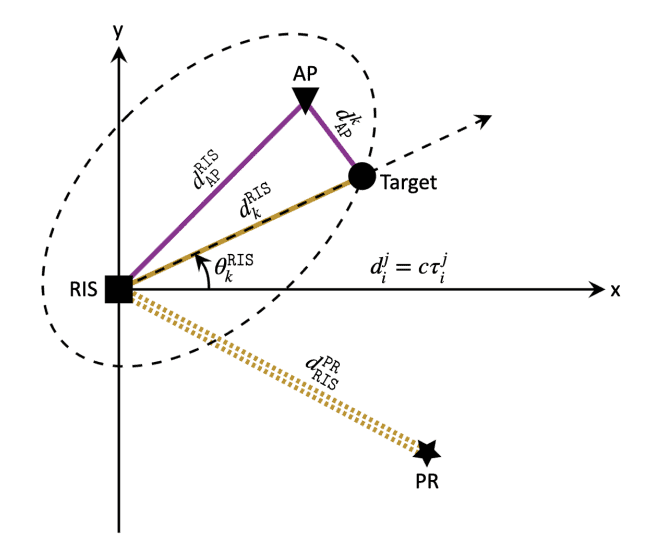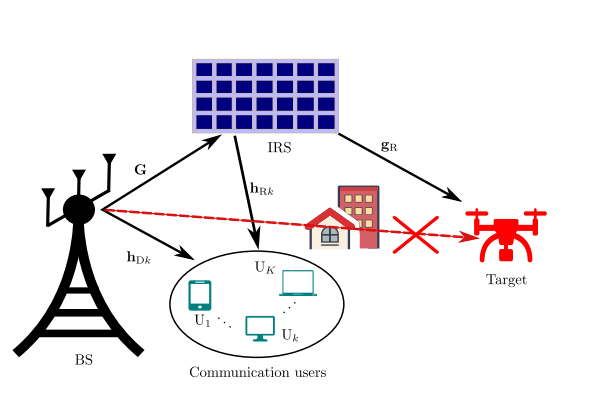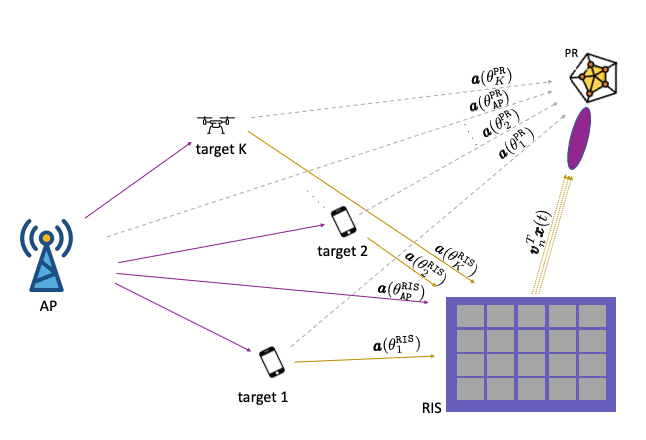Intelligent surfaces aided Integrated Sensing and Communications (ISAC)

NYU Wireless P.I.s
Research Overview
Integrated sensing and communication (ISAC) is anticipated to be a crucial, and an important element of 6G, allowing the same waveform to carry information for both sensing and communication. The growing adoption of technologies like haptic medicine, extended reality, holographic teleportation, terahertz bands, and Internet of Things devices will significantly increase bandwidth demands, posing a challenge for 6G researchers and engineers. ISAC addresses this challenge by enabling shared spectrum usage and enhancing efficiency in processing power and hardware, thus mitigating bandwidth limitations. ISAC is traditionally categorized into three types: joint-design, balancing sensing and communication; radar-centric, embedding information into radar signals; and communication-centric, which this work focuses on, using communication waveforms for sensing. Additionally, using existing waveforms can reduce equipment, installation, and maintenance costs.
Reconfigurable intelligent surfaces (RISs) have recently emerged as a groundbreaking technology that improves wireless communication security against eavesdroppers through passive beamforming. The benefits of RISs in secure communication-only MIMO systems are well established. Therefore, exploring RIS advantages within communication-centric, sensing-centric, or joint ISAC systems is valuable, particularly for aspects such as localization performance, security, and dynamic range considerations.
-
⁃ RISs can significantly enhance sensing, and in particular localization performance, within a communication-centric bistatic ISAC system. For this, efficient signal processing algorithms are needed to estimate the underlying sensing parameters for localization.
⁃ RISs can be used in conjunction with a bistatic ISAC system to reduce the large dynamic range inherently arising due to the power difference levels between single pathloss components for communications and double/triple path-loss components arising from sensing. The key question remaining is how to efficiently precode at the base station and configure RIS elements in order to reduce the large dynamic range.
⁃ Intelligent surfaces can also be used for multi-functional purposes, such as sensing, communications, security and energy harvesting, with the aim of enhancing resource utilization efficiency, and reducing network cost by allowing multiple functionalities within a unified shared intelligent surface.
The project is expected to develop new techniques for leveraging RISs within ISAC systems to enhance localization performance and manage dynamic range issues. Additionally, it aims to create efficient signal processing algorithms and explore multifunctional uses of intelligent surfaces to improve resource utilization and reduce network costs.
follow this research
*stay current with research in this area by completing this form

 2025 Brooklyn 6G Summit — November 5-7
2025 Brooklyn 6G Summit — November 5-7 Sundeep Rangan & Team Receive NTIA Award
Sundeep Rangan & Team Receive NTIA Award 2025 Open House
2025 Open House











